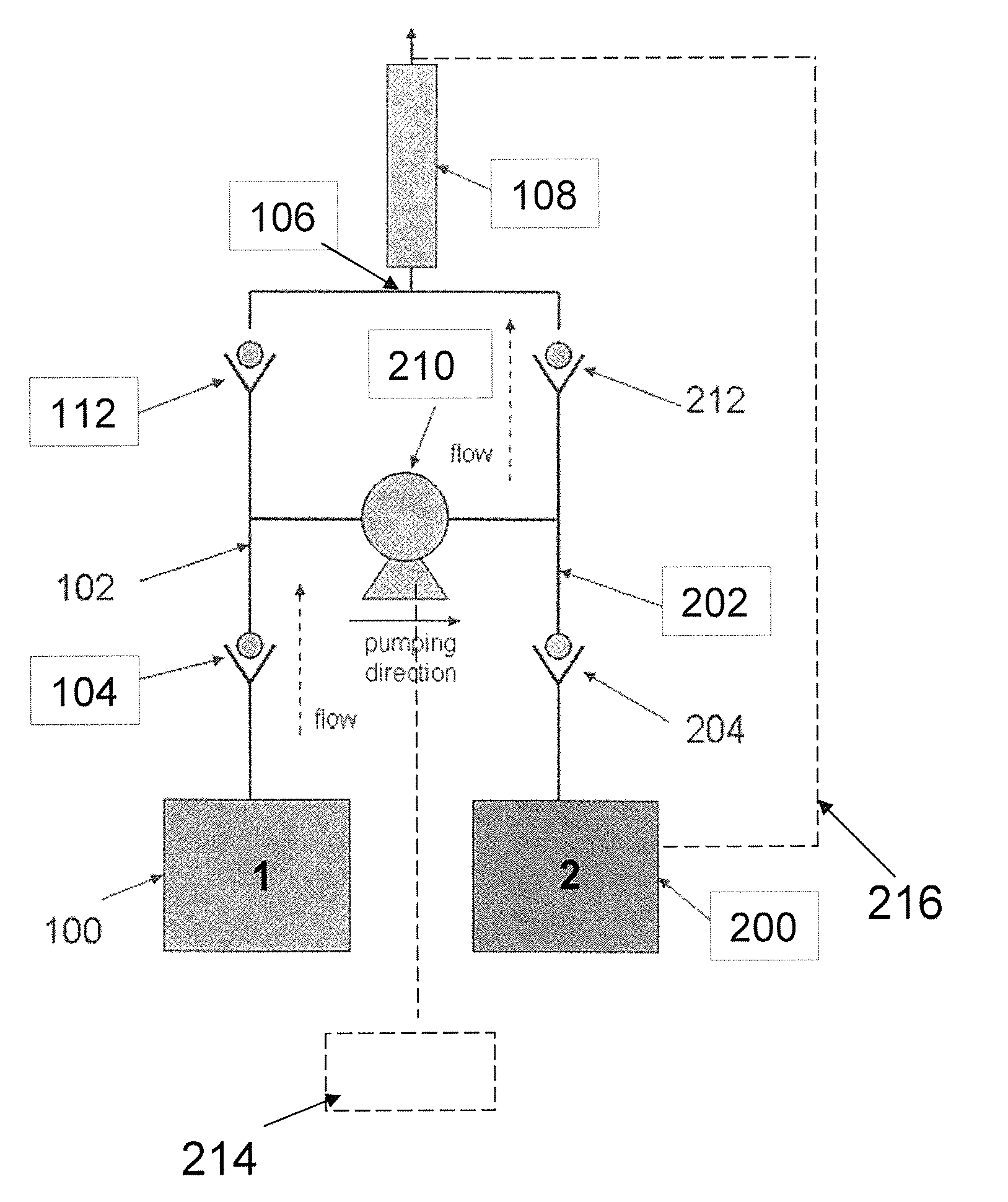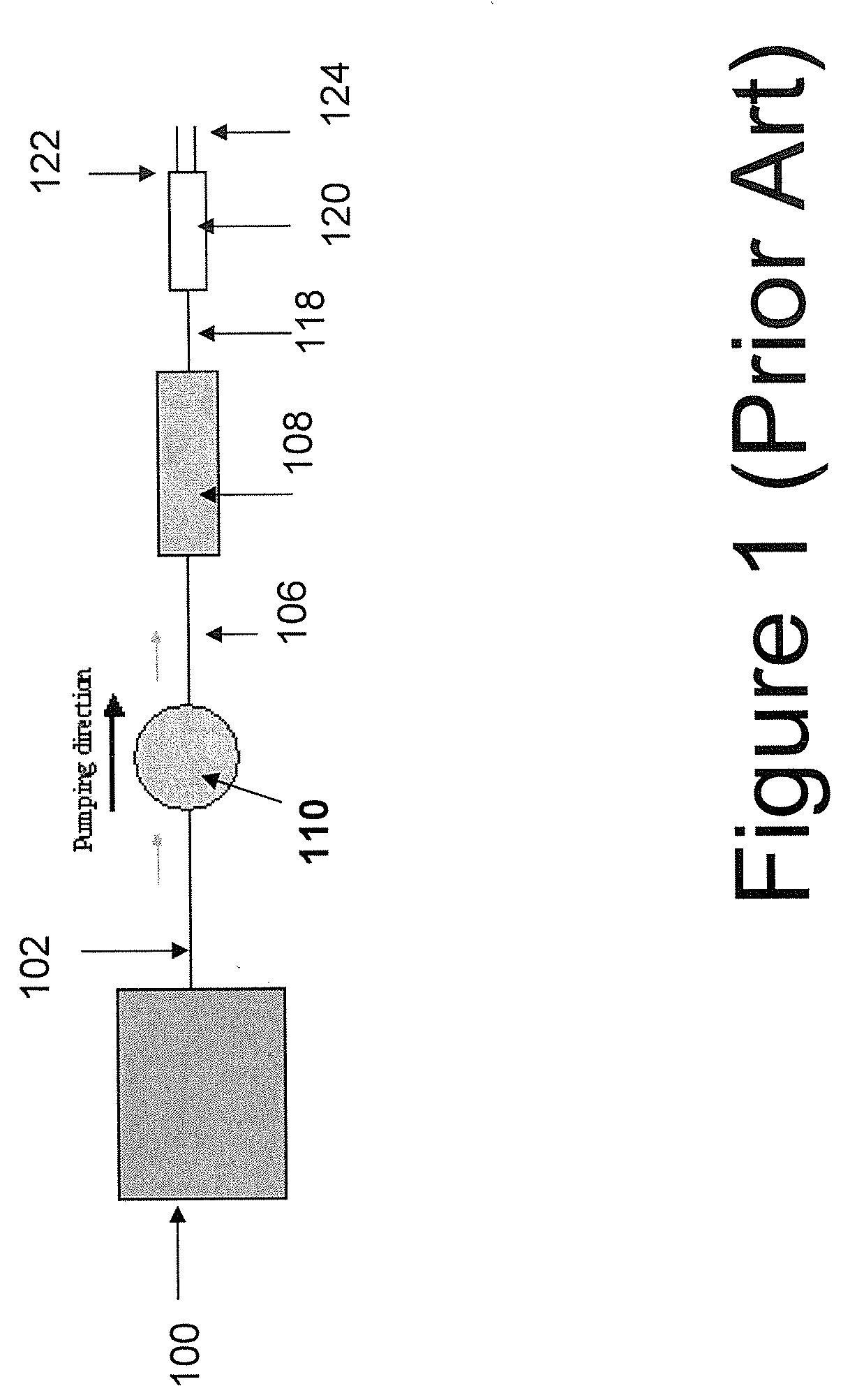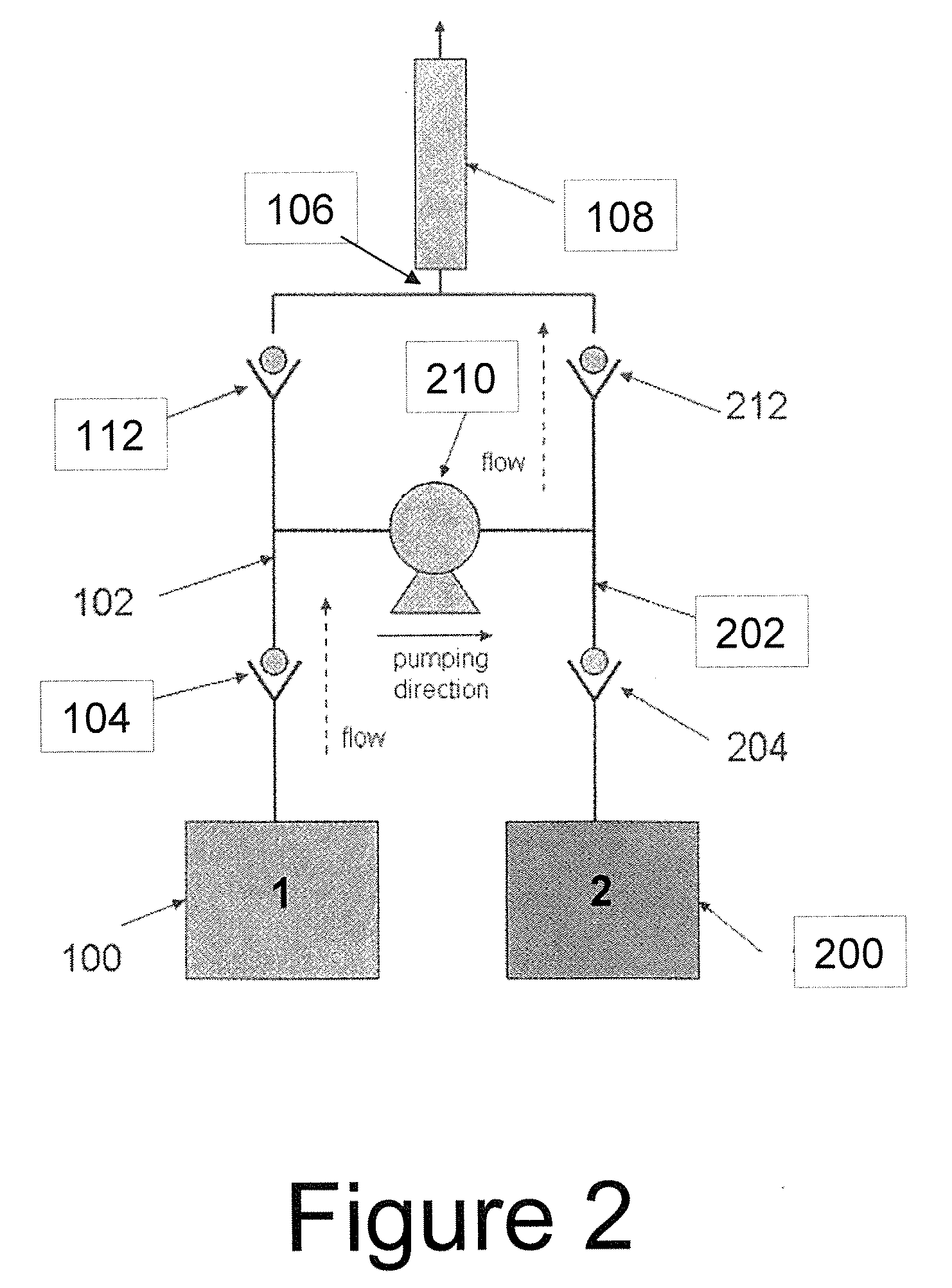Systems and methods for generating hydrogen gas
a hydrogen gas and system technology, applied in the direction of positive displacement liquid engines, liquid transfer devices, separation processes, etc., can solve the problems of clogging of pumps and valves, requiring a more complex system, and requiring additional pumps and flow controllers or fuel regulators, so as to reduce clogging
- Summary
- Abstract
- Description
- Claims
- Application Information
AI Technical Summary
Benefits of technology
Problems solved by technology
Method used
Image
Examples
example
[0049]The following provides a more detailed description of use of the system comprising a reversible pump as shown in FIGS. 2 and 3 for generation of hydrogen from two components of a fuel mixture.
[0050]In operation of the system to provide a method of generating hydrogen according to one embodiment, the fuel comprises a metal hydride fuel component that is a complex metal hydride that is water soluble and stable in aqueous solution. Examples of suitable metal hydrides are those borohydrides having the general formula M(BH4)n, where M is an alkali or alkaline earth metal selected from Group 1 (n=1) or Group 2 (n=2) of the periodic table, such as sodium, potassium, lithium, calcium or magnesium. Examples of such compounds include without intended limitation NaBH4, KBH4, LiBH4, Ca(BH4)2 or Mg(BH4)2. These metal hydrides may be utilized in mixtures, but are preferably utilized individually. Sodium borohydride is preferred in the present invention due to its comparatively high solubili...
PUM
| Property | Measurement | Unit |
|---|---|---|
| speed | aaaaa | aaaaa |
| gravimetric energy density | aaaaa | aaaaa |
Abstract
Description
Claims
Application Information
 Login to View More
Login to View More - R&D
- Intellectual Property
- Life Sciences
- Materials
- Tech Scout
- Unparalleled Data Quality
- Higher Quality Content
- 60% Fewer Hallucinations
Browse by: Latest US Patents, China's latest patents, Technical Efficacy Thesaurus, Application Domain, Technology Topic, Popular Technical Reports.
© 2025 PatSnap. All rights reserved.Legal|Privacy policy|Modern Slavery Act Transparency Statement|Sitemap|About US| Contact US: help@patsnap.com



